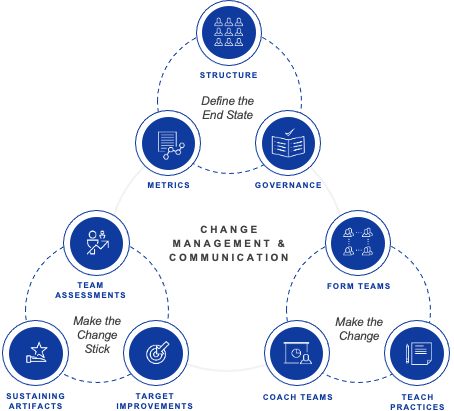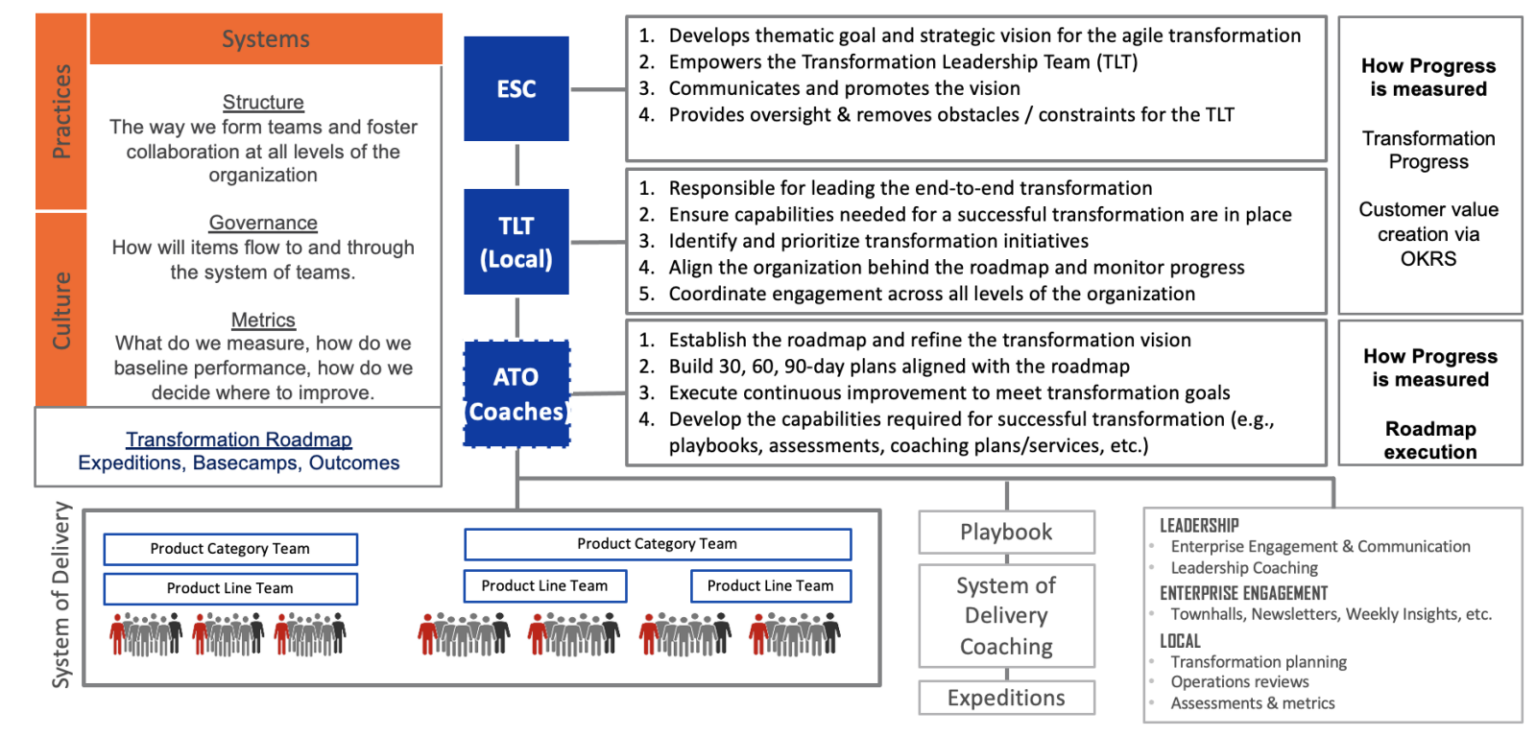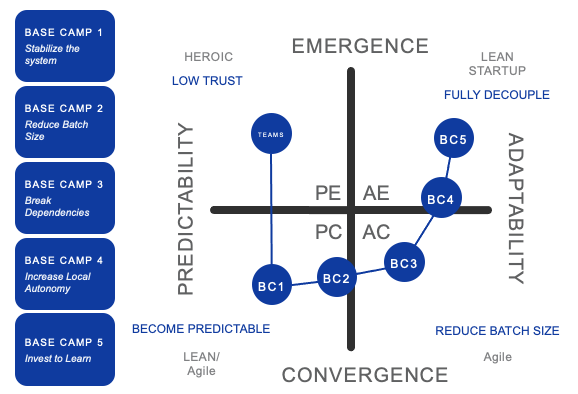The System of Transformation helps establish true business agility across the enterprise safely but quickly – demonstrating clear and measurable progress at every step.

Align on the vision by agreeing on the goals of the transformation and design the ecosystem that will support those goals. That includes aligning teams to value, streamlining decision-making, establishing clear methods to align execution with strategy, and establishing metrics that guide continuous improvement.
Leverage organizational change management disciplines to intentionally and incrementally implement the end state using outcomes-based plans. Form and coach the teams, build maturity in new practices, and demonstrate measurable improvement to business outcomes each step of the way.
Harness insights from performance metrics and ongoing assessments (implemented during “define the end state” and “make the change”) to improve the organization continuously. Nurture a culture of continuous improvement by establishing clear routines for evaluating and explicitly targeting improvement opportunities across the enterprise.
A change management structure to envision, communicate, and drive the transformation.

The 4 Quadrants grew from a need to explain why different methodologies arose to meet different organizational needs and how to orient the organization to where it is today and where it needs to get in the future. To understand the constraints that drive decision making around process and how we can change these constraints over time to give us more flexibility in achieving our goals. The 4 Quadrants give us a way to talk about where we are today, where we need to be in the future, and a way to lay out a plan for how we’ll get there over time.
The 4 Quadrants are an effective tool for getting consensus around where an organization, a division, a product line, or a team is today and comparing that to where it needs to be. It provides context for understanding where you are and where you want to go and for discussing the organizational impediments that will make the journey difficult. Often, an organization is stuck in one quadrant because they don’t have the trust, haven’t moved the people, or have overwhelming technical constraints that keep them locked in place.

To begin, we must recognize that organizations have competing needs. Executives need their teams to make and meet commitments. These executives made promises, and their organizations need to deliver. That said, these same executives live in a world of uncertainty. They’re always responding to change and need their teams to respond to that change with them. The thing to recognize is that the need to be predictable competes with the need to respond to change. If we optimize for predictability, we make it harder to change. If we optimize for change, we make it harder to make and meet commitments. At this point, there’s no value judgment one way or the other, but recognizing where the organization is and what we value is critical to the Transformation journey.
Markets have similar dynamics to companies. Some markets are undefined, and tapping into those markets has high uncertainty. Sometimes, the market doesn’t exist, and sometimes, it’s so new that the requirements aren’t defined—or even definable. We call these markets emergent. Companies playing in these markets are testing product hypotheses to validate that what they think will work has a chance of actually working. Other markets are what we call convergent. They know what they want; they want it fast, cheap, high quality, and on schedule. Markets like these are not optimizing for experimentation; they’re optimizing to reduce risk.
Often, the challenge on the emergent/convergent axis is that the markets with convergent expectations behave in an emergent manner. This happens because while they understand at a high level what they want and what they need, they don’t have specific understanding of how to build it or what it will take to build it. Sometimes the gap is so big that it’s practically impossible to put together a plan with any degree of confidence. This behavior often drives us to attempt Agile in an organization exhibiting adaptive-emergent behavior, but that values predictive-convergent outcomes.
A Basecamp is simply an intermediate state along the Transformation journey. Direction is set and you’re guided by the Compass, while the Basecamp is an intermediate step along the way that allows you to measure progress, claim an intermediate victory, and possibly rest and refuel for the next leg of the Transformation. Remember, the work of a Transformation is changing your organizational context so that the change will stick. This can be a long process. The organization needs to move in smaller, more quantifiable steps.
Basecamps allow us to break the Transformation into smaller funding increments with measurable and defined intermediate goals. Basecamps are dynamic and should be tailored to each unique journey, the complexity of the environment, and the nature of the changes to implement.